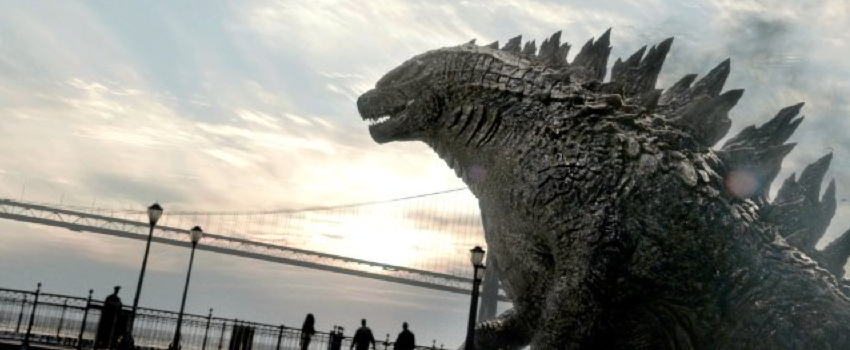
 “Godzilla (2014)” is the Hollywood treatment of the storied monster genre that die-hard fans have been waiting for. It hits most of the marks well, but may leave some emotionally cold. But that’s okay, because it’s a monster movie, right?
“Godzilla (2014)” is the Hollywood treatment of the storied monster genre that die-hard fans have been waiting for. It hits most of the marks well, but may leave some emotionally cold. But that’s okay, because it’s a monster movie, right?
The origin story is told through a combination of opening title credits featuring archived footage of nuclear bomb tests and newspaper clippings. Smartly trading on the advent of the nuclear age (which has been a central metaphor for the franchise), it is insinuated at that we are responsible for unleashing monster terror on the world. It is also suggested that the “tests” may not have been tests at all, and we’ve been fighting the monster war in secret for decades.
The film’s first half is all set-up. We meet Joe Brody (Bryan Cranston), an American nuclear engineer working in Japan in the 1990s. His wife, Sandra (Juilette Binoche), also a fellow engineer, works with him. When a plant they operate literally implodes, Joe is left in tragedy wondering what went wrong. Flash forward some 15 years, Joe’s son, Ford (Aaron Taylor-Johnson), has joined the US military and serves as a bomb disposal expert. Joe still lives in Japan, where he has descended into a bit of madness.
Meanwhile, there has been a monster discovery in the Philippines, and Dr. Ichiro Serizawa (Ken Watanabe) and his assistant, Vivienne Graham (Sally Hawkins), are called in to investigate. In time, these characters will be joined by Admiral William Stenz (David Strathairn) as the monster battles take to the streets of the world’s most heavily populated cities. No metropolitan center is safe.
Although clearly not meant to be taken too seriously, the story is fairly devoid of humor. Cranston does the most emoting and plays Joe as a tortured man convinced that there has been a massive government coverup. And Cranston is darned good playing it straight. A little more comic relief may have helped, especially as the characters magically travel from city to city in record time and show up exactly where they need to be when the plot requires it. These narrative leaps of faith kept me from engaging with the story, and like most fans, I just wanted the development to end and the monster wrestling to get ramped up. And when the climatic battles do happen, they certainly don’t disappoint.
Following the typical structure associated with the genre, we all know that the film will end with a fight in some metropolis, this time San Francisco. Buildings crumble easily, bullets seem to have no effect, and in end all that’s standing in the way of human extinction is, you guessed it, Godzilla. Playing the hero is a good role for the big scaly monster, and he looks very much up to the task. The creature design is consistent with the classic original that made its appearance back in the 1950s.
While not quite rubbery, there is a sense of “man-in-suit” campiness to the monsters, they do not seem to be as organic as those featured last year in the excellent “Pacific Rim.” And it is important to note that “Rim” manages to one-up this more streamlined monster tale by having a more complex narrative and more humor. The battle sequences in “Rim” were far more intimately shot and crafted. We often see Godzilla fighting from a far—even on TV news screens instead of in real time. The news screen technique is a smart one, because it gives away just enough early to hint at what is coming in the end. But some viewers, however, may be frustrated that they are watching the fights through a smaller TV set on a larger screen instead of seeing everything in glorious full screen. Director Gareth Edwards has done this before effectively in his indie darling “Monsters.” And it is surprising that he relies on it so much in this film, especially given the monster-sized budget he and his team have to play with here. I found the effect to be sharp, and it provides the film with its best laugh moments.
If audiences endorse this reboot of the Godzilla tale, we may see a franchise. But if this is a one-off, it is a worthy one, Godzilla has been given his due.

